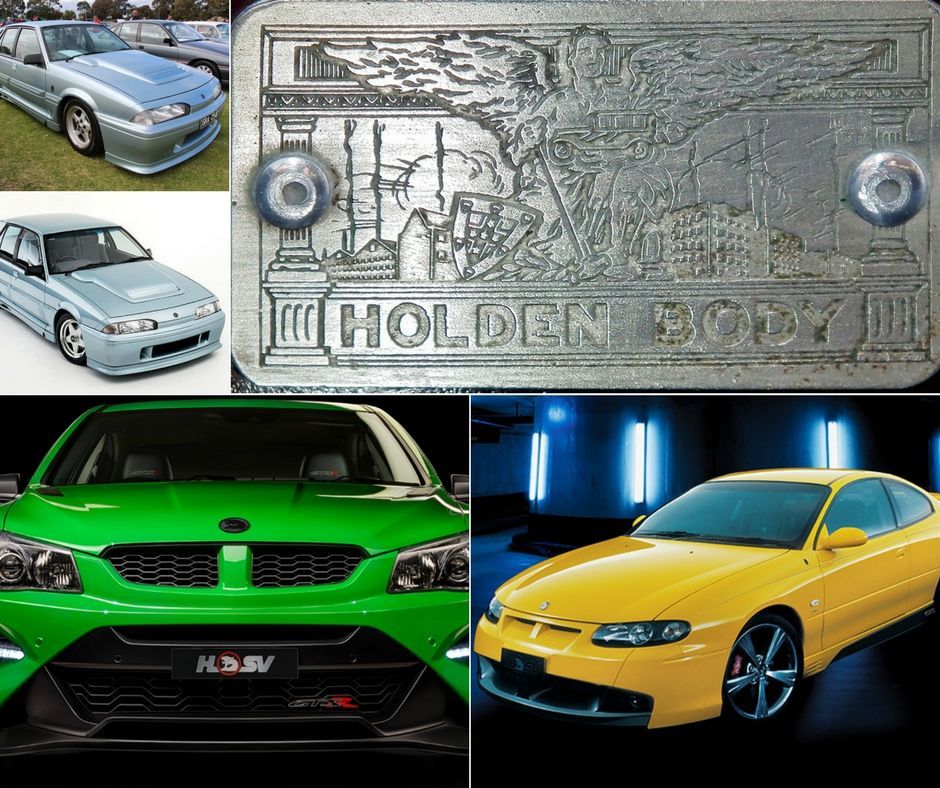History of Holden

How the humble 1856 J.A. Holden & Co Adelaide saddlery business became one of Australia’s most iconic brands.
From fine leather saddlery for the discerning gentleman, to smoke-inducing, tyre-destroying, adrenaline-pumping exhilaration; Holden has definitely come a long way.
Holden was born as a saddlery manufacturer in Adelaide in 1856 by James Alexander Holden. By 1923, due to wartime trade restrictions and a changing auto manufacturing industry, Holden’s Motor Body Builders (HMBB) was created, to evolve from a saddlery and upholstery company and into Australia’s first large-scale auto manufacturer. By 1923, automobiles were the craze the world over and the race was on to mass produce a vehicle that had decent mileage, reliability and style.
Fun Fact–HMMB was the first company to assemble bodies for the Ford Motor Company of Australia!
There were a few hiccups along the way—Holden’s second full-scale car factory was completed in Melbourne 1939. Car production, however, wasn’t on the agenda. The onset of World War II led to production efforts shifting to producing vehicle bodies, field guns, aircraft and engines.
Fast forward a few decades to the swinging sixties and Holden was starting to generate some serious interest with the first Australian designed and mass-produced V8—available in two capacities: 253 cubic inches (4.1 L) and 308 cubic inches (5.0 L).
The 70s saw the production of the iconic HQ, a longer wheelbase for the production of legendary ‘Sandman’ panel vans and the ‘Statesman’.
More importantly, the HQ laid the groundwork for a new generation of two-door Monaros. The HQ also went on to become the highest selling Holden of all time, with 485,650 units sold (1).
The 70s also introduced Australia to the Commodore in the VB guise.
Holden went through a rough patch until the 1990s, when a redesigned Commodore, exportation of large numbers of the Commodore engine to power cars made elsewhere, and the importation and rebadging of imported cars allowed Holden to offer a full range of vehicles.
In 2002, Holden generated worldwide interest with the redesigned Monaro. A simple formula of a big V8 coupe was popular among enthusiasts and was even rebadged in the UK as the Vauxhall Monaro and in the US as the Pontiac GTO
Although we’ve brushed over much of the history of Holden, especially Holden Special Vehicles (HSV), we’ve done so for a reason. Mainly because the history of Holden is huge, but you guys just want to read about the really nice cars. The special ones.
HSV VL SS Group A SV Walkinshaw
HSV was originally formed by Holden and the legendary Scottish racing car driver’s outfit Team Walkinshaw Racing, with the 1988 HSV VL SS Group A SV Walkinshaw.
HSV GTS Coupe
In 2001, HSV capitalised on the success of the Commodore and revived the legend of the Monaro, producing a driving piece of art named the GTS Coupe. In managed 275km/h at the top of 5th gear at Holden’s Lang Lang proving ground. It’s safe to say the test was successful.
2015 HSV Gen-F2 GTS W1
The Gen-F2 was the first HSV to welcome the supercharged 430kW V8 that adorns all new HSVs, except the forthcoming GTSR series.
Not only did the Gen-F2 series throw a whole lot more power, torque and general meanness at the new car, it’s also packed with so many electronics it could practically drive itself.
2017 HSV GTSR-W1
Last but not least, is something created by the maddest scientists in the deepest basement of the HSV HQ.
Here are some stats for general reading/shock
- 474 kW 6.2 litre supercharged LS9 Generation IV alloy V8 engine with 6-speed close-ratio manual transmission
- Hi-flow exhaust system with x-pipe intermediate and bi-modal mufflers
- Carbon fibre airbox
- Electronic Stability Control (ESC) incorporating: ABS, EBD, EBA & TCS
- Driver Preference Dial (DPD) incorporating: ESC, Traction Control, Launch Control (manual only), EPS, TV & bi-modal exhaust
- 410mm (front) & 372mm (rear) drilled 2-piece discs with forged monoblock 6-piston calipers (red)
There’s a whole bunch more that can be read on the HSV website including a good deal of carbon fibre, magic and a small touch of sorcery.
HSV GTSR
Many would consider the 1996 HSV VS GTS-R as HSV’s real entrance into performance motoring. It was in fact the inspiration for the HSV’s swansong—the GTSR.
Limited slip diff and electronic torque vectoring will help control this monstrous 135 kW 6.2 litre supercharged LSA Generation IV.
Yes, you read that correctly.
- 435kW
- Supercharged.
Unfortunately, the majority of us won’t ever have a chance own one of these beauties. However, Mater Cars for Cancer is giving one of our amazing supporters the chance to win one of these strictly limited edition HSV GTSR.
Helping to beat cancer and driving away in a limited edition HSV, PLUS $25,369 worth of gold bullion? That gold should cover your fuel and tyre costs for a while.
Don’t forget to grab your tickets today!

We would love to hear from you
We would love to know what you think about Mater Lotteries!
1800 067 066
All times displayed in your local timezone unless stated otherwise. Mater Foundation Ltd as trustee for Mater Foundation is registered as a charity with the Australian Charities and Not-for-profits Commission. ABN 96723184640. All prices are displayed in AUD.



